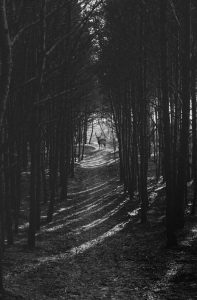In my mother’s backyard are some trees touched by magic.
This means a different thing for each plant, but for each of them I can often hear the same tone of tired resignation when she looks at them. They’re different flavours of exhaustion, to be sure, but you wouldn’t be able to tell if you weren’t paying attention.
One is a soursop tree, one she planted fairly recently but I can’t remember when—maybe just under two years old, if even that long. It’s one she’s been diligent about for a while, excited when it does bear its soft white fruit and anxious when it doesn’t. And a few weeks ago, she was worried that it wouldn’t bear again. She pointed at one of the buds while I was at the backyard and told me she knew for a fact it was sick. I couldn’t tell.
The other is a starfruit tree that’s been in the backyard for so long I can’t remember when she planted it. It isn’t sick at all. In fact, it seems to be going out of its way to show us how virile it is at every possible opportunity. It bears more often than we can eat, the highest branches laden with green-to-yellow fruit. Even when we trimmed a large branch, smaller flowers would emerge from its wound and eventually grow taller than the house. Just making sure some of it doesn’t keep clashing with the roof has been tiresome. When I was younger, I was convinced this tree bore all through the year; I don’t pay much attention now, but I still wouldn’t doubt it. It was so full of life that she seemed more upset that it wouldn’t ever give her a break.
She tends to only have one of the two complaints about the yard whenever she does say anything at all. Either something is struggling and she can’t fathom why, or it’s doing so well that she can’t keep up with it.
She likes to use the same word for both: blight.
Before, I used to consider it weird both ways. When things were going well for a plant, it felt like an intense word to use for abundance. The worst that would happen with more fruits than we can eat was that we’d let it compost, right? It seemed like a strange thing to feel so strongly about. But then again, I’m neither the one watering her flowers nor picking her fruits for her, so perhaps I would never get it, and I let that be.
I much more deeply understood the other state—her intense worry that a plant she wanted so badly to thrive was struggling in ways she couldn’t discover. Sometimes it would intrigue me to watch her go into a kind of deductive mode she rarely reserved for other things, become a kind of private eye about them: to watch her deeply observe the leaves and compare them to what she knew of various illnesses, ask me if I noticed anything strange about the yard recently, making sure whether it had rained in several days.
Then, she’d head to the plant shop after work and pick up bottles of stuff you aren’t allowed to touch bare-handed. My curiosity would never keep so strongly, if I’m being honest, but when it kept, in between sessions of vigorously scrubbing my hands after reading the fine-print instructions for her, I would imagine her a kind of practiced alchemist, the protagonist of a pre-apocalypse, trying to save the world just outside our walls.
My poet-brain lights up when words do multiple things at once. They don’t have to always be overtly connected or inherently semantically complicated. I can make that stretch all on my own—it’s what makes us poets, if you ask me.
So the thing that delights me about the word ‘blight’ is that it describes both an object and an action. It is both the affliction and the act of spreading it; a thing is blighted, and a creature blights it. I also adore that, in the colloquial sense, when referring to flora, ‘blight’ is a fluid category—it can include actual infections that spread from the root and rot a plant, or the byproduct of simply being eaten by the wrong bug or being prime fodder for an invasive species. A thing need not be sick, so much as be uniquely and distinctively destroyed; when we see a thing be overpowered, lose itself to a patient predator, or slowly fall away into its softest self, that thing is blighted even when we don’t know what’s wrong with it.
It’s also poetic that, just like my mother’s starfruits, a blight can be the product of an excess just as much as it can be of a lack. A thing can be so overgrown that its very mass is a threat to itself and its neighbours. Whether it’s weeds conquering the land around desired plants, or simply vines becoming so powerful that they claim their surrounding territories, too much life can be just as much of a curse as a thing that dwindles life.
Seeing the stories that came through for this period’s submission call has been a delight, not only because so many of you are equally fascinated by these connections, but because you have found so many novel and radical stories and poems with these lenses. From the viscerally powerful encroaching of dark growths in Gretchen Tessmer’s ‘Silt and Soot’ and the glowing fungus of Jessica Peter’s ‘In The Urban Darkness, Something’ to the throbbing, meaty life in Sara Omer’s ‘Moonflower’ and the far-future unfreezing of Casey Aimer’s ‘Collective Cryo Dream’, the verse here has been rich with that same kind of excess—strong images that seem to keep coming, getting bigger, and thrusting through the lines for your attention.
The prose has been equally engaging. Bernard McGhee imagines both the natural and social overgrowths that can claim a community in ‘Bringing Down The Neighbourhood’. The heroine of Ash Huang’s ‘A Proper Vessel, A Perfect House’ in searching for means to save their land from pestilence; in Tom Okafor’s ‘The Plague Collector’, you watch another land find its own tragic answer to that fear. We get to follow the growth of some plucky younglings in more ways than one in Rebecca E. Treasure’s ‘Everything, Nothing At All, and All That’s In Between’, and watch nature take new forms to live in Mar Vincent’s ‘The City and the Styrofoam Sea’.
I think what comes through all of them more so than the initial connecting images is that same wavering sense I see in my mother’s backyard garden—the struggle between too much and too little, of ourselves or of others, of our fears or of our hopes, of nature or of our dominion over it. Each story and poem is, in its own way, about people and worlds searching for balance, and asking not only how to get it, but what it will look like when it happens. From our real suburban backyards to the future outside our globe and the fantasy worlds beyond our universe, each question and the answers they may find are just as revolutionary as they are intriguing.
Being a part of this issue has been remarkable—so many of you are telling so many great stories, and I’m glad to have been the most minor part in helping them find their home in this issue. Thank you again to the amazing Apparition team for being such a kickass crew of word-gardeners—watching the Blight issue come together has confirmed what I have already learned reading their previous issues, namely that their sense of story and their desire to steward a wonderful community shine through in every piece they curate and edit. And of course, thank you to you for reading this issue and supporting Apparition through twenty-five issues and counting.
May all your trees bear so much that you complain about whether they will ever stop.
A humble seedling,
Brandon
Brandon O’Brien is a writer, performance poet, teaching artist, and game designer from Trinidad and Tobago. His work has been shortlisted for the 2014 and 2015 Small Axe Literary Competitions and the 2020 Ignyte Award for Best in Speculative Poetry, and is published in Uncanny Magazine, Fireside Magazine, Strange Horizons, and New Worlds, Old Ways: Speculative Tales from the Caribbean, among others. He is the former Poetry editor of FIYAH: A Magazine of Black Speculative Fiction. His debut poetry collection, Can You Sign My Tentacle?, available from Interstellar Flight Press, is the winner of the 2022 Elgin Award.
Apparition Literary Magazine is funded by our patrons, the editors, and by your kind donations. If you’d like to support us, you can follow us on Facebook or Twitter and please consider donating and/or subscribing via Patreon.
Thank you for reading
Rebecca Bennett, Amy Henry Robinson, Tacoma Tomilson, and Clarke Doty






